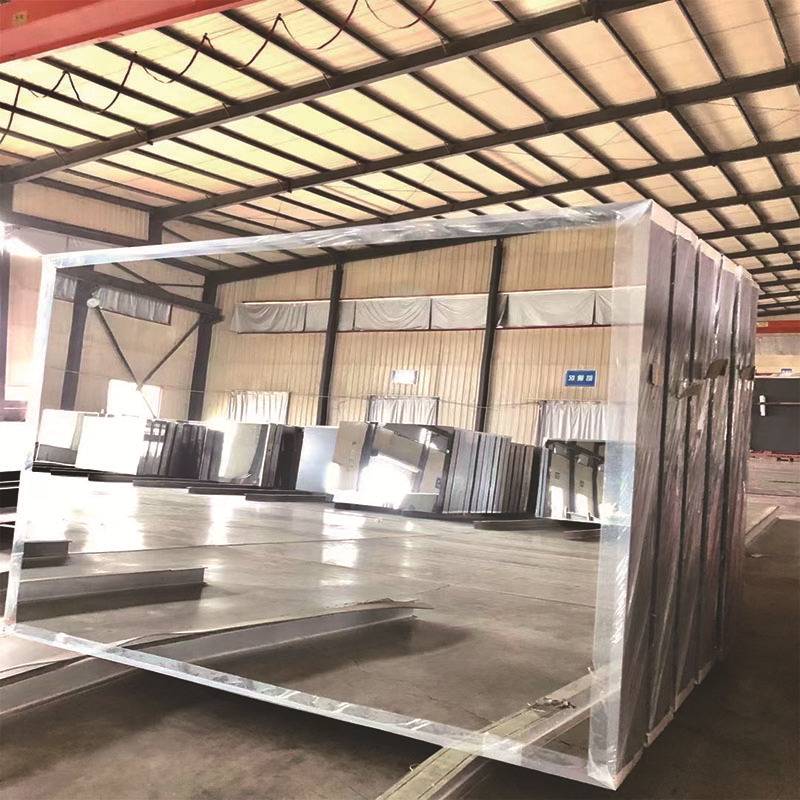Decorative glass is a unique and versatile material that has captured the attention of designers, architects, and homeowners alike. Its aesthetic appeal and functional properties make it an ideal choice for various applications, ranging from art installations to architectural features in buildings. This article explores the significance, uses, and artistry of decorative glass.
One of the most captivating aspects of decorative glass is its ability to enhance the visual appeal of any space. With a myriad of colors, textures, and patterns available, decorative glass can transform ordinary surfaces into extraordinary focal points. Stained glass windows, for instance, have been used for centuries in churches and cathedrals, creating a mesmerizing interplay of light and color. Modern interpretations of stained glass can be found in residential settings, where they serve not only as decorative fixtures but also as a means of privacy.
In addition to stained glass, artists and artisans have developed various techniques to create distinctive decorative glass pieces
. Fused glass, blown glass, and etched glass are just a few examples of how craftsmanship can elevate the beauty of glass. Each technique brings its own unique characteristics, allowing for endless creativity. For instance, fused glass involves melting different glass pieces together at high temperatures, resulting in vibrant and intricate designs that can be used for everything from jewelry to large wall art.
decorative glass
Beyond pure decoration, decorative glass also serves practical purposes. It can be used in architectural designs to improve energy efficiency, utilizing double or triple glazing to maintain temperature and reduce noise. Additionally, decorative glass can provide safety and security in various environments while still allowing natural light to enter spaces. Glass railings, for example, offer safety without compromising on style.
Furthermore, the sustainability aspect of decorative glass should not be overlooked. Many manufacturers are now producing recycled glass products, making it an eco-friendly option for consumers. By choosing decorative glass items, people can contribute to environmental conservation while enhancing their surroundings.
In conclusion, decorative glass is not just a material; it is an art form that blends beauty, functionality, and sustainability. Its versatility allows it to adapt to various styles and needs, making it a favored choice in both contemporary and traditional designs. Whether through stunning stained glass windows or innovative architectural elements, decorative glass continues to inspire and captivate, proving that its potential is as limitless as its creative possibilities.
 Afrikaans
Afrikaans  Albanian
Albanian  Amharic
Amharic  Arabic
Arabic  Armenian
Armenian  Azerbaijani
Azerbaijani  Basque
Basque  Belarusian
Belarusian  Bengali
Bengali  Bosnian
Bosnian  Bulgarian
Bulgarian  Catalan
Catalan  Cebuano
Cebuano  Corsican
Corsican  Croatian
Croatian  Czech
Czech  Danish
Danish  Dutch
Dutch  English
English  Esperanto
Esperanto  Estonian
Estonian  Finnish
Finnish  French
French  Frisian
Frisian  Galician
Galician  Georgian
Georgian  German
German  Greek
Greek  Gujarati
Gujarati  Haitian Creole
Haitian Creole  hausa
hausa  hawaiian
hawaiian  Hebrew
Hebrew  Hindi
Hindi  Miao
Miao  Hungarian
Hungarian  Icelandic
Icelandic  igbo
igbo  Indonesian
Indonesian  irish
irish  Italian
Italian  Japanese
Japanese  Javanese
Javanese  Kannada
Kannada  kazakh
kazakh  Khmer
Khmer  Rwandese
Rwandese  Korean
Korean  Kurdish
Kurdish  Kyrgyz
Kyrgyz  Lao
Lao  Latin
Latin  Latvian
Latvian  Lithuanian
Lithuanian  Luxembourgish
Luxembourgish  Macedonian
Macedonian  Malgashi
Malgashi  Malay
Malay  Malayalam
Malayalam  Maltese
Maltese  Maori
Maori  Marathi
Marathi  Mongolian
Mongolian  Myanmar
Myanmar  Nepali
Nepali  Norwegian
Norwegian  Norwegian
Norwegian  Occitan
Occitan  Pashto
Pashto  Persian
Persian  Polish
Polish  Portuguese
Portuguese  Punjabi
Punjabi  Romanian
Romanian  Russian
Russian  Samoan
Samoan  Scottish Gaelic
Scottish Gaelic  Serbian
Serbian  Sesotho
Sesotho  Shona
Shona  Sindhi
Sindhi  Sinhala
Sinhala  Slovak
Slovak  Slovenian
Slovenian  Somali
Somali  Spanish
Spanish  Sundanese
Sundanese  Swahili
Swahili  Swedish
Swedish  Tagalog
Tagalog  Tajik
Tajik  Tamil
Tamil  Tatar
Tatar  Telugu
Telugu  Thai
Thai  Turkish
Turkish  Turkmen
Turkmen  Ukrainian
Ukrainian  Urdu
Urdu  Uighur
Uighur  Uzbek
Uzbek  Vietnamese
Vietnamese  Welsh
Welsh  Bantu
Bantu  Yiddish
Yiddish  Yoruba
Yoruba  Zulu
Zulu 

